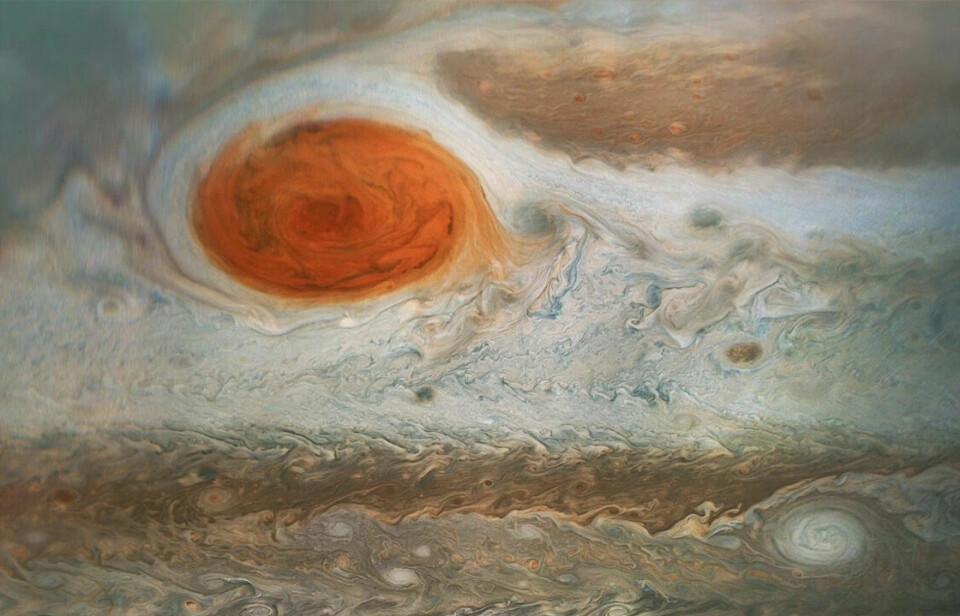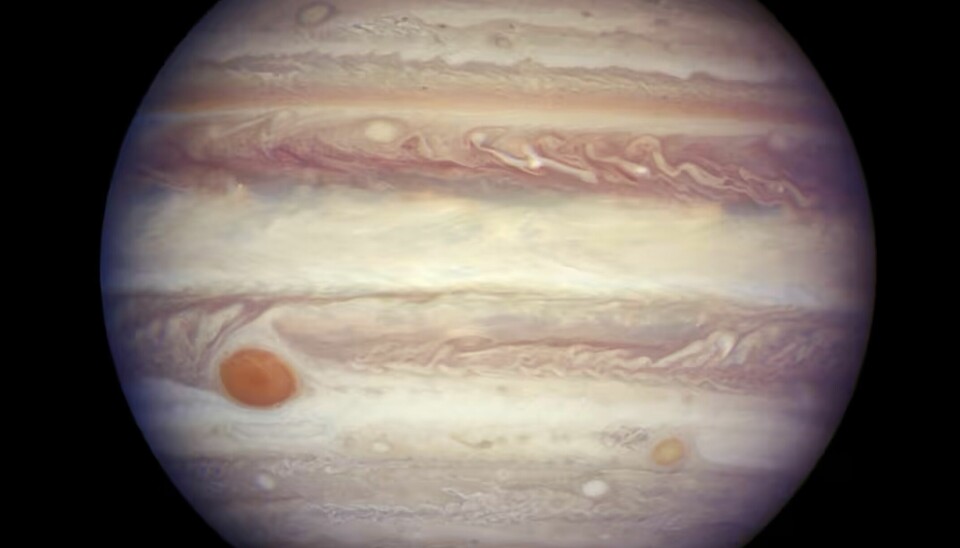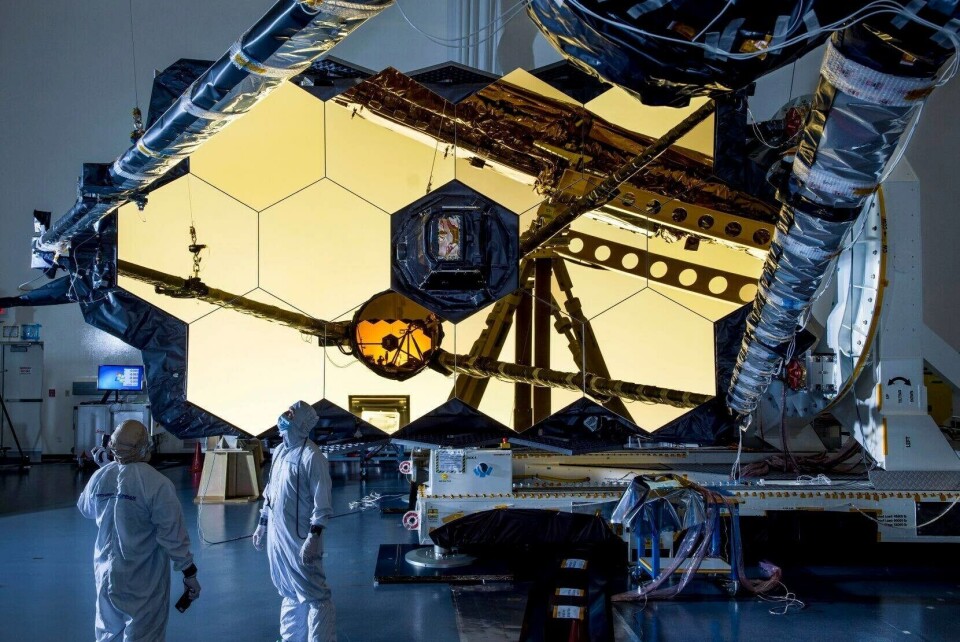VETENSKAP
James Webb ska rikta sin kamera mot Jupiters stora röda fläck

"Stora röda fläcken" är ett stormområde på planeten Jupiter, som James Webb snart får till uppdrag att fotografera med sin höga upplösning.
Nu har James Webb Space Telescope fått en lista på utvalda uppdrag där totalt 253 GO:s, eller "generella observationsprogram", har valts ut för att tillägna 5 500 observationstimmar för olika fenomen.
Ett av uppdragen för JWST är att rikta sin kamera mot Jupiter för att fånga planetens röda fläck på bild. Tanken är att detta ska ske under senare delen av 2024. Redan tidigare har vi kunnat skåda bilder tagna med satelliten Juno under 2017, vars uppdrag var att gå in i bana runt Jupiter för att studera planeten närmare.


Jupiters stormsystem "stora röda fläcken" är större än jorden, och kan observeras från vår planet med vanliga teleskop. Fläcken är spännande att undersöka då den både minskar i storlek för att sedan öka i storlek, plus att den kan lära oss mycket om andra planeters struktur, dynamik och kemi.
Förutom att fotografera Jupiter ska JWST även undersöka exoplaneter, hitta några av de tidigaste galaxerna och studera Saturnus måne Titans atmosfär. Här finns en hel lista på uppdragen för JWST under 2024/2025:
LÄS ÄVEN
-
Trebandskameran ska ge detaljerade bilder på svarta hål
-
Världens största digitalkamera har tagit sina första testbilder
-
Hjälp astronauterna – skicka in dina bilder på norrsken
-
Världens största digitalkamera nu installerad – fotar i 3,2 gigapixlar
-
Kolla in första närbilden på en stjärna utanför Vintergatan
-
Se astronautens fotoexperiment – fotograferad på rymdstationen





















